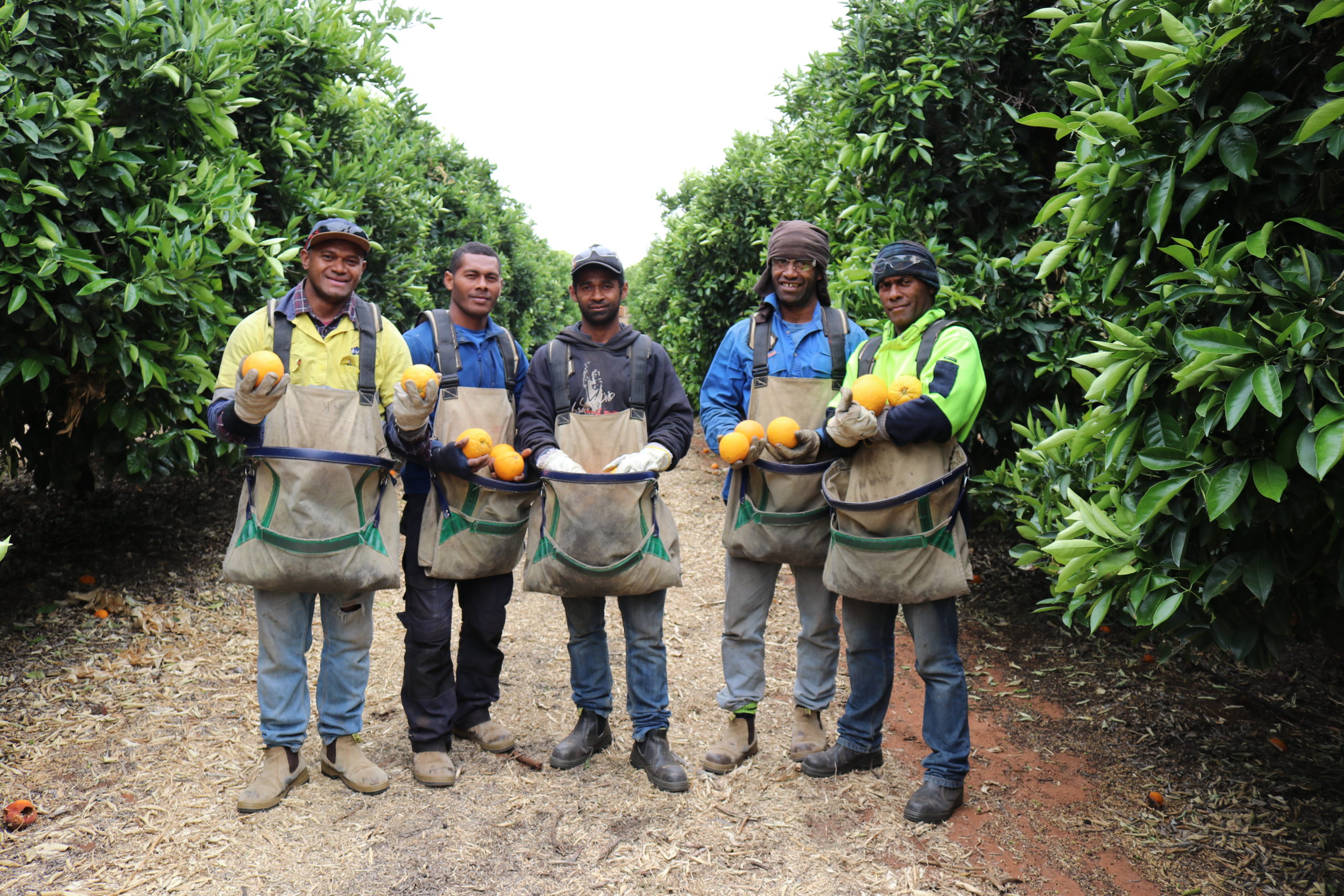There has been a huge spike in Pacific Islanders applying for protection visas because they offer better working conditions than the government programme designed to help workers from nine islands and Timor-Leste come to Australia, advocates say.
Home affairs department figures show 171 seasonal workers from the Pacific applied for protection visas in 2019-20, with the number increasing to 1,002 in 2021-22 and 1,698 in 2022-23.
While their applications are assessed, the workers are granted bridging visas, which offer unrestricted working rights. Conversely, Pacific Australia Labour Mobility (Palm) workers are currently tied to one employer during their stay.
Some Palm workers have told Guardian Australia they make as little as $200 (US$134) a week and can go weeks without work.
The Australian Workers Union national organising director, Shane Roulston, said as the government ramped up the Palm programme to fill labour shortages, employers had brought over workers when they didn’t have sufficient work.
“There are some approved employers who are … obviously bringing significantly more workers than they need,” he said. “In some cases 40-50 percent [more]. So there’s not sufficient work for them.”
Roulston said the union had seen some cases where workers had gone months without work.
The majority of Palm workers were not applying for protection visas with the expectation they would be allowed to stay permanently in Australia, the union organiser said. “They see it as a way to get to stay in Australia for a bit longer, do some more work on the programme, where they’ve got the chance to send money home.”
The home affairs department was contacted for comment.
The federal government is working to overhaul the Palm program, which brings thousands of migrants from the Pacific Islands to Australia each year to work on farms and other businesses, including nursing homes and meat works.
One worker, who did not want to be named, is currently picking grapes in south-east Australia.
His payslips show that some weeks he earned as little as $251 (US$169) after deductions. He said the labour-hire company he was working for told him deductions would be a set amount.
“The air fares they said would be $900 (US$605) but they’re exceeding $2,000 (US$1,346) now,” he said. “The accommodation was meant to be $150 (US$100) and $65 (US$43) for transport [a week] and now they’re changing it to $70 (US$47) and $160 (US$107) for accommodation. They’re robbing us.”
The grape picker said some weeks he did not earn any money but still owed the labour-hire company for food and accommodation – a “cramped” room shared by three people.
The government reforms mean employees are meant to receive a minimum net $200 a week after deductions and tax – but the workers say that is not enough.
“We end up with $300 (US$202) and then we buy food every day and then we have less than $100 (US$67) we’re sending to our country. It’s not good,” he said. “It’s not enough for our family to survive.”
The Palm worker said he was tied to the labour-hire company which would not provide a termination letter so he could seek work with another employer.
The chief executive and co-founder of the Pacific Islands Council of South Australia, Tukini Tavui, said some workers without sufficient hours were absconding or, increasingly, applying for a protection visa to gain unrestricted working rights.
The rate of absconding has increased from 1,181 in 2021-22 to 1,593 from July 2022 to late April 2023.
“There are a number of people around particularly in eastern states who are telling workers to go on protection visas and they are helping them apply for it and they’re getting paid for helping them,” Tavui said.
He said he had spoken to one worker who paid $2,000 (US$1,347) for help with a protection visa application.
Additional changes – which roll out in 2024 – will mean Palm employees should be paid for a minimum 30 hours a week. If they are offered less than 20 hours, the employer should pay for accommodation and the transport.
“Approved employers must also have a contingency plan for situations such as a weather event or natural disaster that may impact their ability to provide workers with 30 hours of work a week,” a spokesperson for the Department of Employment and Workplace Relations said.
SOURCE: THE GUARDIAN/PACNEWS















